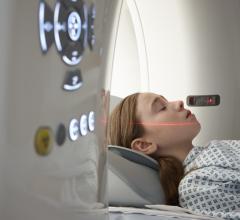June 14, 2011 – GE Healthcare Medical Diagnostics announced results of a study evaluating the cardiopulmonary safety of Optison (Perflutren Protein-Type A Microspheres Injectable Suspension, USP), a U.S. Food and Drug Administration (FDA)-approved diagnostic ultrasound contrast agent for use in improving suboptimal echocardiograms.
Presented at the American Society of Echocardiography (ASE)'s 22nd annual Scientific Sessions, the results showed that Optison did not significantly affect pulmonary arterial systolic pressure (PASP) or pulmonary vascular resistance (PVR) compared to baseline in patients with normal or elevated pulmonary arterial systolic pressure.
“These results should provide encouragement for patients and clinicians about the safety and tolerability of Optison,” said Michael Main, M.D., of Saint Luke’s Mid America Heart Institute, lead author of the study. “Optison provides a quick and convenient contrast option for improving suboptimal echocardiograms of the heart’s left ventricle in patients.”
This single-blind, two-period cross-over, placebo-controlled study was conducted in 30 subjects, aged 18 years and older who were referred for cardiac catheterization. It compared the effects of Optison against 5 percent dextrose (control) on PASP and PVR, assessed during right heart cardiac catheterization.
“Clinical results show that ultrasound contrast agents, like Optison, can be a valuable tool to assist in the diagnosis of cardiovascular disease, a leading cause of death for both men and women,” said Brian Robinson, M.D., medical director, GE Healthcare Medical Diagnostics.
Researchers concluded that there were no clinically meaningful changes in pressure and resistance in the pulmonary arteries following intravenous injection of 0.5 mL of Optison in patients with either normal (<35 mm Hg) or elevated (>35 mm Hg) baseline PASP. Overall, average PASP values were about the same as baseline (55.2 mm Hg at baseline compared with 55.6 mm Hg at two minutes after injection, 54.1 mm Hg at six minutes after injection, and 54.6 mm Hg at 10 minutes after injection). Similar results were observed in each treatment arm (Optison followed by control or control followed by Optison) and in both treatment arms combined. There were no serious adverse events.
For more information: www.gehealthcare.com


 July 25, 2024
July 25, 2024 








